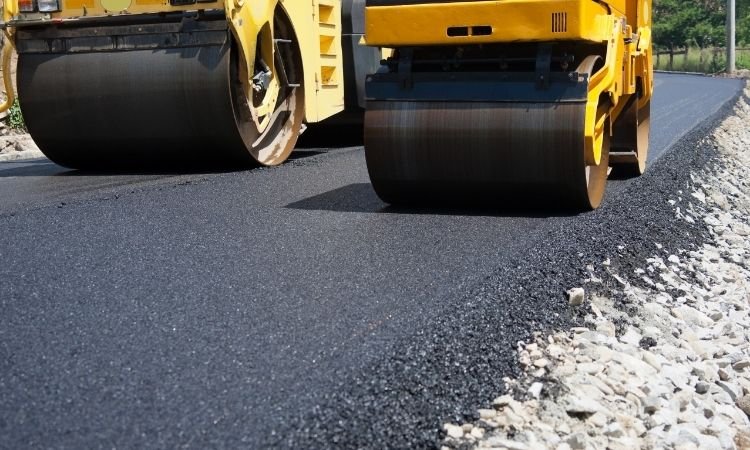Asphalt — a name synonymous with roads, runways, and robust infrastructure — has been a silent force underfoot for centuries. Often overlooked, this black, sticky substance plays an irreplaceable role in shaping our cities, connecting communities, and facilitating global movement. More than just a paving material, asphalt is a symbol of durability, flexibility, and enduring performance. From ancient Babylonian streets to modern-day superhighways, it continues to evolve while holding firm to its roots in resilience.
Crafted from a blend of aggregates, binder (usually bitumen), and sometimes additives, asphalt is designed to endure nature’s fury, heavy traffic loads, and the passage of time. Its unique composition allows it to expand and contract with changing temperatures, making it ideal for regions that experience seasonal extremes. But asphalt is not just about being tough — it’s about being adaptable, eco-conscious, and aesthetically versatile.
Why Asphalt Is the Backbone of Infrastructure
Every time you drive on a smooth highway, walk along a neatly finished pathway, or land at an airport runway, you’re experiencing the silent strength of asphalt. Its smooth surface reduces noise pollution, enhances vehicle fuel efficiency, and provides better skid resistance, ensuring safety for both pedestrians and vehicles. It’s no wonder that it remains the most preferred material for road construction worldwide.
What sets asphalt apart is its recyclability. Old asphalt can be milled, reheated, and reused without compromising quality. This makes it one of the most sustainable construction materials available. With proper maintenance and resurfacing techniques, an asphalt surface can last decades, offering performance that’s both economically and environmentally sound.
The Versatile Nature of Asphalt in Everyday Life
While most people associate asphalt with roads, its applications stretch far beyond. Parking lots, playgrounds, sports tracks, airport runways, and even industrial flooring benefit from asphalt’s versatile nature. Its ability to be poured, shaped, and compacted quickly means faster project completion and reduced disruption. Whether it’s a rural farm path or a metropolitan expressway, asphalt adapts seamlessly to the terrain, purpose, and scale.
Moreover, the modern formulations of asphalt include polymer-modified blends and porous varieties that allow water to drain through, reducing runoff and enhancing urban water management. Asphalt isn’t just paving ground — it’s solving real-world challenges with intelligent material science.
A Global Material with Local Character
Though asphalt has a universal presence, its production and usage often reflect regional characteristics. In tropical regions, mixes are modified to withstand high temperatures without softening. In colder climates, anti-cracking and de-icing additives are infused to resist freeze-thaw cycles. These regional adaptations highlight asphalt’s chameleon-like ability to perform under any condition, offering customized strength wherever it’s laid.
In places like Japan and the Netherlands, asphalt is engineered with noise-reducing features, while in desert regions, reflective asphalt coatings are applied to combat urban heat islands. The global versatility of asphalt lies not just in its structure but in its ability to meet specific environmental and functional needs with precision.
According to Expert Market Research, the continuing evolution of asphalt technology is directly tied to growing demands for sustainable, durable, and high-performance construction solutions. EMR emphasizes that advancements in asphalt recycling, temperature-resistant formulations, and green paving techniques are driving innovation in road-building practices. These developments are not only making asphalt more efficient but also aligning its use with environmental goals across both developed and developing regions.
The Science Beneath the Surface
What seems like a simple black road is actually a product of meticulous engineering. The binder used in asphalt is a petroleum product known as bitumen, which holds the aggregate mix together. Different grades of bitumen and aggregate compositions are selected depending on the load, usage pattern, and climate. Engineers design asphalt mixtures based on load-bearing requirements, traffic flow, and environmental exposure, making each asphalt surface a custom-engineered product.
Thermal performance, rutting resistance, and fatigue strength are all taken into account. And thanks to modern innovations, smart asphalts are now being developed that self-heal, monitor temperature, and even generate energy. These aren’t just roads — they’re living, breathing layers of advanced science beneath our feet.
A Sustainable Pathway to the Future
As the world shifts toward sustainable construction, asphalt is stepping up to the challenge. Reclaimed asphalt pavement (RAP), rubberized asphalt from recycled tires, and warm mix asphalt (which requires less energy to produce) are becoming mainstream alternatives. These options drastically cut down on emissions and waste, making asphalt one of the greenest building materials available today.
Furthermore, research continues to push boundaries, with bio-based binders, recycled plastic integration, and nanotechnology promising even more eco-conscious applications. Asphalt is no longer just a road material — it’s a cornerstone in the journey to smarter, cleaner cities.
Final Thoughts: Asphalt as the Pulse of Progress
Asphalt is more than what meets the eye — it’s the silent support behind thriving transportation, urban expansion, and societal progress. Its strength, adaptability, and sustainability make it a timeless material that continues to rise to modern challenges. From the first layer of a rural road to the final touch on an airport runway, asphalt paves not just paths, but possibilities.
Whether it’s carrying millions of vehicles daily or serving as the base for a neighborhood basketball court, asphalt proves that real power often lies beneath the surface. In every black ribbon of road, there’s a story of engineering, endurance, and innovation — one that’s only just beginning.







